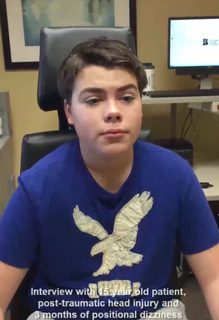
VIDEO: CASE STUDY – Treatment of sub-clinical HC-BPPV in a 15 year-old male post basilar skull fracture and concussion
Published on: May 4, 2015
The literature and this author has presented extensively on the incidence of BPPV post head trauma in children and adults, with and without concussion. Trauma induced BPPV tends to be more bilateral and it is not unusual to involve multiple canals. Often times, because the severity of the head trauma is considerable, BPPV may be overlooked as the simplest genesis of a patient’s chronic dizziness.
Although diagnosis of BPPV considers both the presence of a transient and paired nystagmus (type dependent on ear and canals involved-correlated with head position) with vertigo, transient positional vertigo alone is not unusual. Reported by Haynes et al., 2002, it has been postulated and confirmed with over 13 years of clinical practice that there is a sub-set of patients who present with a positional provoked transient vertigo but without nystagmus. When these patients are treated with the appropriate Canalith Repositioning Maneuver (CRM), there is immediate resolution of the symptoms.
CASE STUDY: 15-year-old male with a basilar skull fracture and concussion secondary to an accidental head trauma. In addition to the classical cortical concussion symptoms of difficulty with concentration, hypersensitivity to light, irritability, disruption of sleep patterns, he is reporting a 3 month period of positional vertigo- worse when rolling onto his left side. Testing was remarkable for a positive sub-clinical HC-BPPV – transient dizziness in a position, but without accompanying nystagmus. All other vestibular testing; rotary chair, c-VEMP, vHIT, VNG (ocular-motors etc.) was unremarkable. Parents report that their son was asymptomatic immediately after treatment and has remained so over the following weeks.
Take Home Message: Regardless of the nature of head injury or trauma, with or without a diagnosis of concussion- evaluation and treatment of BPPV is common in children and adolescents presenting with positional-transient dizziness and should always be considered in a clinical pathway.
References:
1. Haynes, D. et al. Treatment of Benign Positional Vertigo Using the Semont Maneuver: Efficacy in Patients Presenting Without Nystagmus†, The Laryngoscope
Vol. 12. Pages 796-802, 2002
2. Roberts, R. and Gans, R., Non-Medical Management of Positional Vertigo, in Jacobson and Shepard Eds., Balance Function Assessment and Management, 2008, Plural Publishing, San Diego